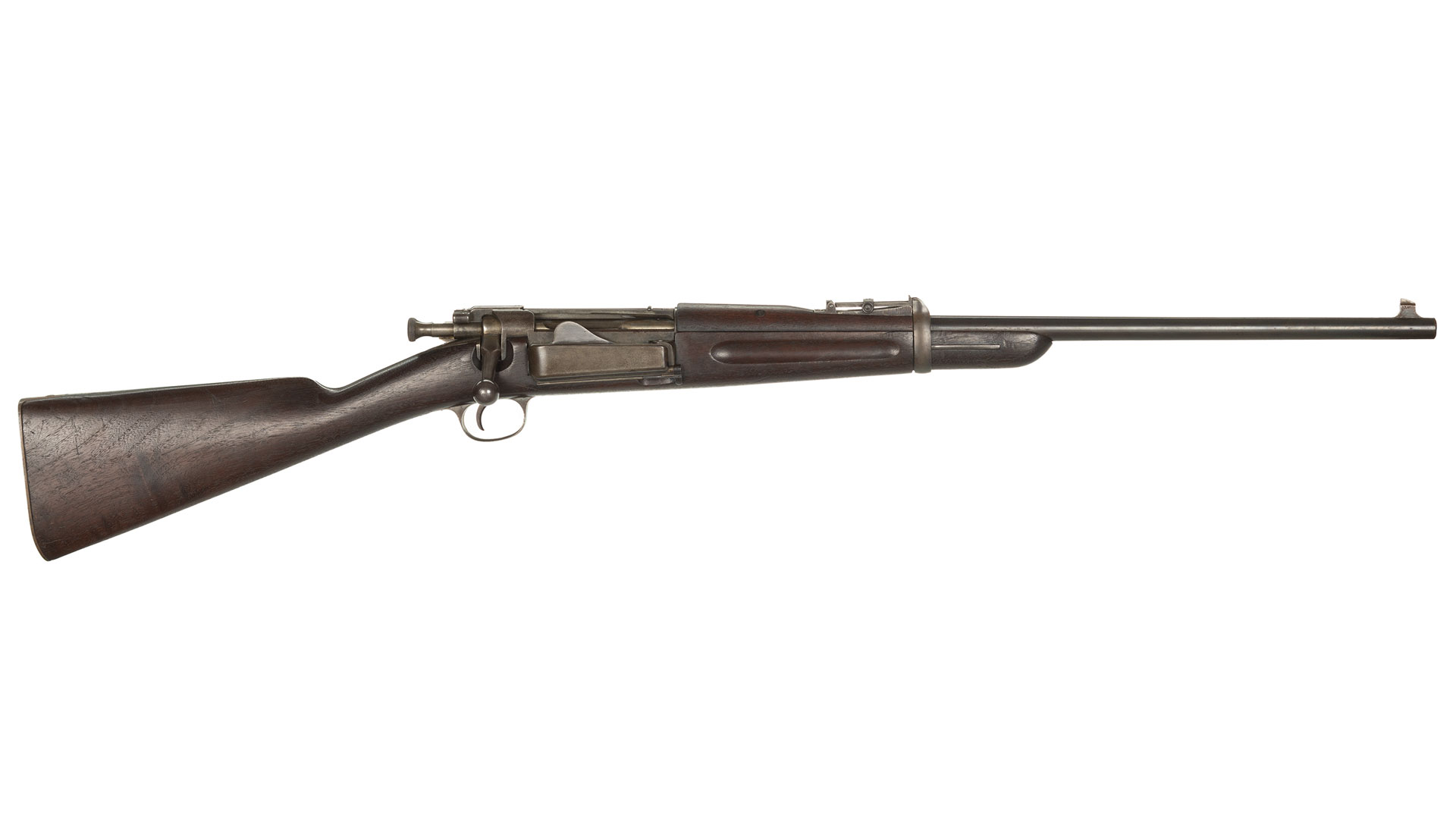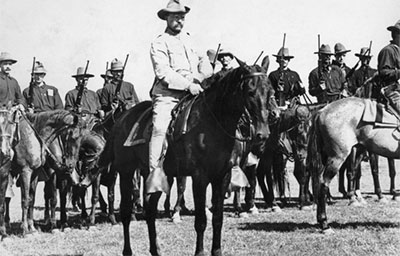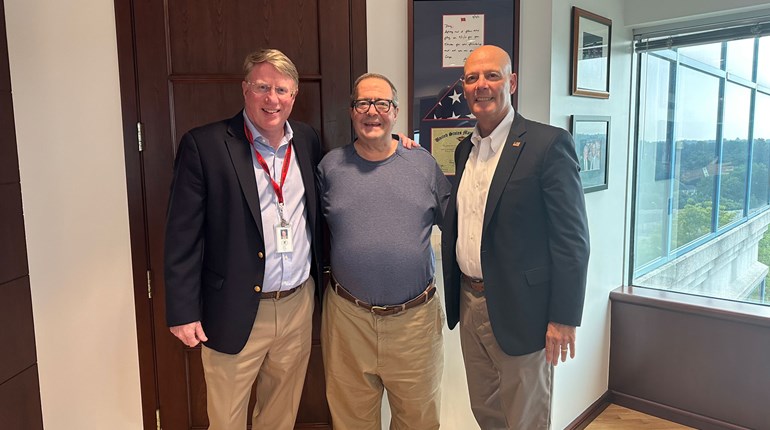
There are some historians who would argue that the 20th century was the “American Century.” America certainly stood front and center on the world stage for the 10 decades that saw some of the most innovative advances and tragic wastes in the entire epoch of world history.
As if it would become a harbinger of things to come, the United States decided to prepare to enter the new century with a new military rifle. The 1880s had witnessed the introduction and advancement of smokeless rifle powders, and their obvious advantages sent the arms designers, procurers and manufacturers into a frenzy. Everyone, all at once, desired to adopt a smokeless-powder rifle that shot a self-contained metallic cartridge from a magazine. No longer would entire armies find themselves at a disadvantage because their single-shot, blackpowder guns had fouled themselves into uselessness.
In 1890, the United States was armed with the single-shot Model 1873 “Trapdoor” Springfield rifle and carbine. An Army Board reviewed 53 various rifles and, in a most shocking move, picked a rifle that had been designed by two foreigners. (Two disappointed rifle board entrants actually filed suit trying to reverse the selection. One of their grounds was that it was “unAmerican.”) The rifle that the Army settled on as its first bolt-action, magazine-fed, smokeless-powder longarm was designed by two Norwegians: Col. Ole Herman Johannes Krag and Erik Jørgensen. Their rifle was a unique magazine-fed design that allowed a user to randomly drop five cartridges into the right-side box magazine and close the door which allowed a spring lever to push the rounds around the bolt and into the chamber.

Most folks will tell you that the first year of production is the worst model to buy. Wait a few years for the “bugs” to get ironed out and all will be well, they are fond of saying. In the case of the Krag, as it is now referred to, the first effort was the best.
I can say, without fear of contradiction, that the Krag-Jørgensen rifle is the finest, smoothest, bolt-action ever manufactured. No one in the 130 years since its introduction has been able to surpass or even match the glass-like smoothness of the Krag bolt.
The Danish Army was the first to adopt the Krag in 1889, and the United States adopted a modified version of the rifle in 1892. The rifle was chambered in the brand-new, rimmed .30-40 Krag cartridge, a close cousin to the .303 British cartridge adopted by the British military in 1891.
The new cartridge fired a .30-caliber bullet with a 40-grain charge of nitrocellulose powder. The bullet was a round-nose, 220-grain FMJ, and when fired from the 30-inch barrel of the rifles and 22-inch carbines, it achieved a maximum velocity of 2,000 fps. Sights were graduated out to 2,000 yards, beyond the effective range of the round.

Between 1892 and 1901, the Springfield Armory in Massachusetts produced nearly 750,000 Krag rifles and carbines in nine different models. The standard model was introduced in 1892, with updated models in 1896, 1898 and 1899. Each new model represented a new rifle, carbine and some specialty versions.
The most celebrated chapter in the service life of the Krag came during the Spanish-American War of 1898 and the Philippine Insurrection of 1899 to 1902. Even though the war with Spain had started some six years after the adoption of the Krag into military service, the numbers on hand were still limited enough to warrant the use of the venerable “Trapdoor” in Cuba and the Philippines by most of the volunteer and state troops that were sent into combat.
For the most part, the Spanish were armed with the Mauser Model 1893 in 7 mm Mauser, a smokeless-powder cartridge. COL Theodore Roosevelt of the 1st U.S. Volunteer Cavalry (the Rough Riders) remarked that during the skirmishing on the night previous to the famous charge up San Juan Hill, he felt that the U.S. troops were still at a disadvantage with some of the blackpowder Trapdoors, as the smoke generated clearly gave away the position of the firing party, whereas the Spanish were able to keep their positions concealed due to their use of the smokeless powder.
As the former Assistant Secretary of the Navy in President McKinley’s cabinet, Roosevelt, as Executive Officer of the Rough Riders, pulled every string in Washington to secure 1,000 of the Model 1896 Krag carbines for his unit. (The Model 1898 carbine was not actually issued until the battles in Cuba had ended in August of 1898.) His men were proud to display them in a famous photograph of the unit atop San Juan Hill on July 1, 1898.
The Krag stayed in service until it was replaced by the Springfield Model of 1903, and was still in active inventory in many state and National Guard units up through World War I.
Today’s collector has a wide variety of makes and models to choose from depending on how extensive of a collection they wish to build. Even the various Krag bayonets alone are the subject of a profusely illustrated 311-page book by Donald J. Hartman.
If you’re looking for a historic rifle or carbine to take to the range and with which to enjoy a day of fun shooting, the Krag, if you can find the ammo, is one of my personal favorites. You can shoot it all day and not feel beaten up by it the next morning.




































